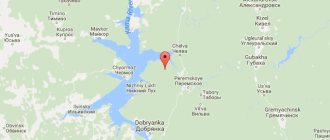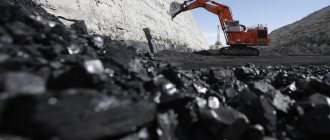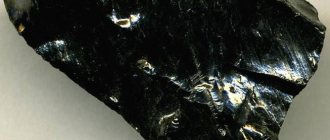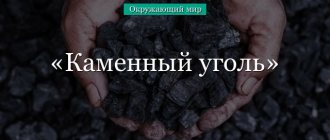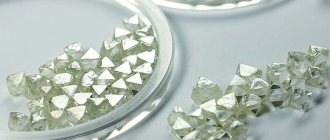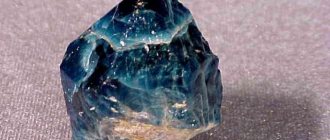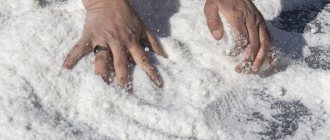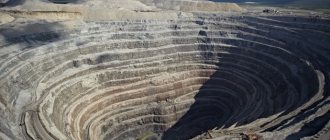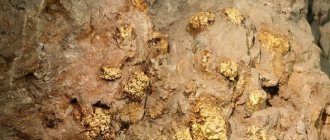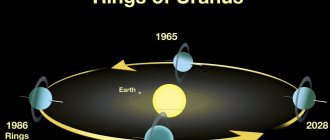Minerals of Russia
The classification of minerals is based on their industrial use. In accordance with it, the following types of minerals are distinguished: combustible, ore and non-metallic.
Let's look at what Russia's mineral resources are.
- Combustibles - oil, gas, coal, oil shale, peat - the country ranks 1st in the world in terms of gas reserves, 7th in oil, 3rd in coal.
- Ore , that is, metal compounds - Russia is compared with the periodic table, saying that the country has deposits of all kinds of metals.
- Nonmetallic materials are divided into several types: building materials, gems, precious stones, raw materials for the chemical industry, groundwater.
Combustible minerals are concentrated on the plains (from the lowlands of the European part to the plateaus of Siberia), ore minerals are concentrated in mountainous regions.
Uranus.
Uranium (U, Latin uranium) is a chemical element with atomic number 92 in the periodic table, the atomic mass of uranium is 238.029.
Uranium is a very heavy, silvery-white, lustrous metal. In its pure form, it is slightly softer than steel, malleable, flexible, and has slight paramagnetic properties. Melting point 1132.3 °C.
Uranium is a weakly radioactive element that has no stable isotopes.
Natural uranium consists of a mixture of three isotopes: Uranium 238 (238U - has 146 neutrons, Uranium 238 in natural uranium is 99.3%, its half-life T1/2 = 4.468⋅109 years), Uranium 235 (235U - content in natural uranium approximately 0.72%, T1/2 = 7.04⋅108 years) and Uranium 234 (234U - content in natural uranium is approximately 0.0055%, T1/2 = 2.455⋅105 years). The last isotope of uranium is not primary, but radiogenic; it is part of the radioactive series Uranium 238 (238U).
Uranus. Historical reference.
The first important date in the history of uranium is 1789, when the German natural philosopher and chemist Martin Heinrich Klaproth reduced the golden-yellow “earth” extracted from the Saxon ore of pitchblende to a black metal-like substance. In honor of the most distant planet known at that time (discovered by Herschel eight years earlier), Klaproth, considering the new substance an element, named it Uranus.
For fifty years, Klaproth's uranium was considered a metal. It was only in 1841 that the French chemist Eugene Peligot (1811-1890) proved that, despite its characteristic metallic luster, Klaproth's uranium is not an element, but its oxide UO2.
In 1840, Eugene Peligo managed to obtain the simple substance Uranium, a heavy metal of a steel-gray color, and determine its atomic weight.
The next important step in the study of Uranus in 1874 was made by D.I. Mendeleev. Based on the periodic system he developed, he placed Uranus in the farthest cell of his table. Previously, the atomic weight of Uranus was considered to be 120. Mendeleev doubled this value. After 12 years, his foresight was confirmed by the experiments of the German chemist Zimmermann.
In 1804, the German chemist Adolf Gehlen discovered the photosensitivity of a solution of uranyl chloride in ether. The French inventor Abel Niepce de Saint-Victor tried to use this property in photography in 1857, but discovered that uranium salts emit some kind of invisible radiation that exposes photosensitive materials.
In 1896, while exploring Uranus, the French scientist Antoine Henri Becquerel accidentally discovered the phenomenon of radioactive decay. At the same time, the French chemist Henri Moissan managed to develop a method for producing pure metallic Uranium.
In 1899, Ernest Rutherford discovered that the radiation of uranium preparations is heterogeneous, that there are two types of radiation - alpha and beta rays. They carry different electrical charges; Their range in matter and ionizing ability are far from the same. In May 1900, Paul Villar discovered a third type of radiation - gamma rays.
In 1907, Rutherford conducted the first experiments to determine the age of minerals in the study of radioactive uranium and thorium, based on the theory of radioactivity he created together with Frederick Soddy.
The fission of Uranus nuclei was discovered in 1938 by German scientists O. Hahn and F. Strassmann. They were able to establish that when uranium nuclei are bombarded with neutrons, elements of the middle part of the periodic table are formed: barium, krypton, etc. The correct interpretation of this fact was given by the Austrian physicist L. Meitner and the English physicist O. Frisch. They explained the appearance of these elements by the decay of uranium nuclei that captured a neutron into two approximately equal parts. This phenomenon is called nuclear fission, and the resulting nuclei are called fission fragments. This discovery was the source of both peaceful and military use of intra-atomic energy.
In 1939-1940, Yu. B. Khariton and Ya. B. Zeldovich were the first to theoretically show that with a small enrichment of natural Uranium with Uranium-235, it is possible to create conditions for the continuous fission of atomic nuclei, that is, to give the process a chain character.
On December 2, 1942, the theory about the possibility of the process of converting uranium into plutonium was experimentally proven in the USA.
In 1945, the United States created and tested an atomic bomb.
In 1954, the world's first nuclear power plant was launched in the USSR,
Thus, Uranium has become a strategically important and sought-after material and resource!
Reserves of natural Uranium.
Uranium is the highest numbered element found in nature in large quantities.
The amount of Uranium in the earth's crust is approximately 1000 times greater than the amount of gold, and 30 times greater than the amount of silver.
Most of Uranium is dispersed in soils, rocks and sea water. And only a relatively small part of Uranium is concentrated in deposits where the content of this element is hundreds of times higher than its average content in the earth’s crust.
According to 2015 estimates, the world's proven reserves of Uranium in deposits amounted to more than 5.7 million tons.
The largest reserves of natural Uranium, taking into account reserve deposits, are: Australia, Kazakhstan (first place in the world in production), Canada (second place in production), Russia.
According to a 2015 estimate, Russian deposits contain approximately 507,800 tons of uranium reserves (9% of its global reserves). About 63% of natural Uranium in Russia is concentrated in the Republic of Sakha (Yakutia).
The main Uranium deposits in Russia are: Streltsovskoye, Oktyabrskoye, Antey, Malo-Tulukuevskoye, Argunskoye molybdenum-uranium deposits in volcanics (Trans-Baikal Territory), Dalmatovskoye uranium deposits in sandstones (Kurgan region), Khiagdinskoye uranium deposits in sandstones (Republic of Buryatia), Southern gold-uranium deposits in metasomatites and Northern uranium in metasomatites (Republic of Yakutia). In addition, many smaller uranium deposits and ore occurrences have been identified and assessed.
Uranium mining. Historical reference.
In the early 1800s, the first uranium ores were the result of mining waste in Saxony (Bohemia), and Cornwall (England).
The first targeted development of radioactive uranium ores began at the Czech silver deposit Jáchymov.
The famous Jáchymov deposit is located in the Ore Mountains (or Ore Mountains, in German - Erzgebirge) in the west of the Czech Republic, approximately 20 km from Karlovy Vary and 10 km from the German border.
Marie Curie used Jáchymov ore to extract the decay product of uranium - radium, as a result of which she died from the resulting radiation.
Before World War II, uranium ores were mined primarily because of their radium content. The resulting radium was used to make luminescent paint for watch dials and other instruments, weapon sights, in medicine (preparing “radon baths”), etc.
Compounds of Uranium itself as a by-product were used mainly as a yellow pigment. Thus, natural uranium oxide was used to make yellow glaze in ceramics in ancient times, starting from the 1st century BC.
In the United States, the first radium/uranium ore was discovered in 1871 in the gold mines of Colorado (Central City, Colorado). About 50 tons of ore were mined from the area between 1871 and 1895. However, most uranium ores in the United States before World War II came from the vanadium deposits of the Colorado Plateau (Utah and Colorado).
In Cornwall (England), uranium production has been virtually ongoing since 1873 (approximately 175 tons of ore were produced before 1900).
Other early Uranium mining took place in France's Massif Central (Autunois), in Bavaria (Oberpfalz), and in Sweden (Billingen).
The first deposits discovered in Africa - in the Republic of Katanga and in the Belgian Congo (now Zaire) were discovered in 1913.
Other early significant Uranium deposits were discovered in 1930-1950. Among them: Port Radium, Canada (1931); Beira, Portugal; Tyuya Muyun, Uzbekistan; Radium Hill, Australia.
The formation of the uranium industry dates back to the 1940-1950s, when the need arose to obtain radioactive fissile materials for military programs. During the Manhattan Project to build the atomic bomb, uranium ore was first purchased from the Belgian Congo and then came from vanadium mines in the American Southwest and Canada. Eldorado ores were much poorer in uranium than African ores.
The 20th century saw three uranium mining booms: 1956-60, 1967-71 and 1976-82. Then there was a long and deep recession, and a new rise in Uranium production began around 2006. In the 20th century, the United States was considered the world's largest producer of uranium (according to official data, but in fact, uranium production in the former USSR was many times higher than the American one).
By the end of the second half of the 20th century, Canada took first place in the world in uranium production.
In terms of the quality of its uranium reserves, Russia is significantly inferior to the leading uranium-mining countries. The average uranium content in Russian ores is only 0.15% (in Gabon - 0.31%, Zimbabwe - 0.6%, Canada - more than 7%). Russian deposits suitable for extraction by borehole in-situ leaching are insignificant in terms of reserves, while similar foreign objects, for example those in Kazakhstan, are extremely large-scale (100 thousand tons of uranium or more).
In Australia, a significant part of uranium reserves is associated with complex gold-copper ores, which makes its associated production profitable even at low contents.
Uranium mining in the world.
In the 21st century, uranium mining is actively carried out in approximately 13 countries around the world.
In 2022, 59,462 tons of uranium were mined worldwide.
The largest international producers of Uranium were the following countries: Kazakhstan (39%), Canada (22%), Australia (10%), Namibia (7.1%), Nigeria (5.8%), Russian Federation (4.9%). %), Uzbekistan (4.0%), China (3.2%), USA (1.6%), Ukraine (0.9%), India (0.7%), South Africa (0.5%) and Pakistan (0.1%).
The largest natural uranium mines are Cigar Lake and MacArthur River (Canada), Ranger and Olympic Dam (Australia), Krasnokamensk (Russia) and Rossing (Namibia).
The largest producers of uranium products are Cameco, Rio Tinto, Areva, Kazatomprom and ARMZ-TVEL.
The uranium mining methods used are traditional underground and open-pit mining (50%) and in-situ leaching (50%). There are about 50 uranium mining centers in the world.
Uranium ore mining technologies.
Mine underground mining of uranium ores.
Open pit mining of uranium ores.
Extraction of uranium ores by borehole underground leaching.
Uranium mines of the USSR.
The USSR was the world's largest producer of uranium for its time: in the 1980s, the uranium mining industry of the USSR produced up to 16 thousand tons of uranium per year.
Mines of Tajikistan.
In the USSR, the history of uranium ore mining began in 1926 in Tajikistan, when the Taboshar deposit was discovered.
Since 1934, radium has been extracted from Taboshar ore.
In 1935, a small village, a mine and a hydrometallurgical plant were built.
In 1941, the plant of the Main Directorate of Rare Metals of Narkomtsvetmet was evacuated to the village of Taboshar.
Uranium deposits were also found in Adrasman. On this raw material base, construction of plant No. 6 began in 1945.
During Soviet times, on the territory of Tajikistan, the Eastern Industrial Plant of Rare Earth Metals developed a deposit near the city of Chkalovsk. The following mining plants operated:
- village Taboshar, Leninabad region, development and processing of uranium-vanadium ores;
- village Chigirik, Tashkent region, processing of uranium ores;
— Chkalovsk, Leninabad region, processing of Taboshar ores;
- village Naugarzan, Leninabad region, development of uranium ores, which are processed in Chigirik;
- village Yangiabad, Angren region, development of uranium ores.
The explored reserves of industrial uranium in Tajikistan are quite limited and were practically exhausted by the mid-1950s.
Mines of Uzbekistan.
During Soviet times, uranium mining was carried out by the Navoi Mining and Metallurgical Combine (Navoi city).
The following mining enterprises operated:
- Uchkuduk city, Navoi region - development of uranium-containing ores simultaneously with gold mining at the Kokpatas mine with the separation of uranium at the Navoi Mining and Metallurgical Plant;
- village Charkesar, Namangan region - development of uranium ores;
- village Nurabad Samarkand region - development of uranium ores;
- village Karnab Samarkand region - development of uranium ores;
- village Zafarabad Navoi region - development of uranium ores;
- Zarafshan city, Sugraly deposit, Navoi region - development of uranium ores.
Mines of Kyrgyzstan.
During Soviet times, uranium mining was carried out by the Kyrgyz Mining Combine (Frunze). The following mining enterprises operated:
- village Ak-Tyuz (Bordunsky village, development of uranium- and thorium-containing lead ores;
- village Min-Kush, Naryn region, development and processing of uranium-containing ores, simultaneously with lignite mining;
- village Tyuya-Muyun, Osh region, uranium-vanadium ore deposit;
- village Kyzyl-Dzhar, Osh region, development of uranium-containing ores simultaneously with gold mining;
- village Kadzhi-Sai, Issyk-Kul region, development of uranium-containing ores simultaneously with lignite mining;
- village Shakaftar (Shekaftar), Osh region, development of uranium ores;
- village Aksuek Dzhambul region, development of uranium ores;
- village Mirny, Dzhambul region, development of uranium ores;
- village Stepnoy, Chimkent region, development of uranium ores (the first PV in the USSR);
- village Taukent, Chimkent region, development of uranium ores (UV);
- village Kurdai, Dzhambul region, development of uranium ores;
— Kara-Balta, processing of uranium ores.
Mines of Kazakhstan.
During the Soviet era, uranium was mined on the territory of Kazakhstan by the Caspian Mining and Metallurgical Combine (PMMC) in Shevchenko and the Tselinny Mining and Chemical Combine (TsGKhK), Stepnogorsk.
The following mining enterprises operated as part of PGMK:
- Art. Koktas, Dzhambul region, development of uranium-containing copper ores;
- village Granitogorsk; Dzhambul region, development and processing of uranium-lead ores.
The Central Mining and Chemical Combine included five mining departments directly involved in the extraction of uranium ore:
- RU-1 village. Shantobe, Tselinograd region;
— RU-2, Stepnogorsk, Tselinograd region;
- RU-3 village. Zaozerny, Kokchetav region;
— RU-4 village. Krasnogorsk, Turgai region;
- RU-5 village. Volodarskoye, Kokchetav region.
Mines of Ukraine.
During Soviet times, the Eastern Mining and Processing Plant extracted uranium at the Zheltye Vody deposit (Terny village, Dnepropetrovsk region).
The following mines operated as part of the uranium ore mining plant:
— Ingulskaya mine;
— Smolinskaya mine.
Mines on the territory of the RSFSR (Russia).
During the Soviet era, the following mining enterprises operated in Russia under the uranium ore mining program:
— Lermontov, Stavropol Territory, development and processing of uranium-molybdenum ores.
- village Chupa, Karelia, deposit of uranium-containing materials;
— Northwestern coast of Lake Onega, deposit of uranium-containing minerals;
— Lovozero tundra, Kola Peninsula. deposit of uranium-containing minerals;
- village Vishnegorsk, Chelyabinsk region, deposit of uranium-containing minerals;
- village Novogorny, Chelyabinsk region, deposit of uranium-containing minerals;
— Vikhorevka, Irkutsk region, development of uranium-thorium ores;
— Ufa, deposit of uranium-containing minerals;
— Krasnokamensk, Chita region. uranium ore deposit;
— Slyudyanka, Irkutsk region, development of uranium ores;
— Aldan, Yakutia, development of uranium and thorium containing ores simultaneously with gold mining.
Uranium mining in modern Russia.
Uranium mining operations in Russia are managed by the Atomredmetzoloto company, which is part of Atomenergoprom (an enterprise of the Rosatom State Corporation).
Priargunsky Industrial Mining and Chemical Association, Khiagda, Dalur are the main uranium production enterprises in Russia, producing about 90% of domestic uranium.
In order to guarantee long-term raw material supply for industry needs for uranium, in 2010 Rosatom acquired the Canadian company Uranium One, and on its basis consolidated highly efficient uranium assets in Kazakhstan and other countries. Over the past 8 years, the production of Uranium One has increased almost 5 times, which has allowed it to reach fourth place in the world among uranium companies.
The extraction of uranium ores in Russia is carried out by open-pit and underground methods, and the method of borehole underground leaching is also used.
Uranium mining. Uranium mines of the world and Russia. Map of uranium mines.
Women's site: I-the-most-beautiful.rf (www.i-kiss.ru)
Author: Mironov Matvey Sergeevich
Share with friends on social networks:
Other news:
- Nagan system revolver. 3-line revolver model 1895.
- Brezhnev Leonid Ilyich. The era of Brezhnev.
- Khrushchev Nikita Sergeevich
- Beria Lavrenty Pavlovich
- Ampoulomets. History of the use of ampoules.
- Suez crisis. Suez War.
- Kollontay Alexandra Mikhailovna
- Fritz Schmenkel - Hero of the Soviet Union.
- Tutberidze Eteri Georgievna
- Igor Talkov - I will be back, gentlemen Democrats!
- Sinking panties. The history of the band Singing Cowards.
- Vigorous wine. Invigorating wine.
- Tair Salakhov buy paintings. Tair Salakhov sale of paintings.
- Blanching. Why is blanching done?
- Replacing the lens of the eye. Lens replacement surgery.
- Levi Strauss & Co. History of the brand and company.
- Molotov Vyacheslav Mikhailovich
- Sverdlov Yakov Mikhailovich
- Jet Institute. The history of the creation of the jet institute.
- Tukhachevsky Mikhail Nikolaevich
- Dzerzhinsky Felix Edmundovich
- Problems with stool! Types of constipation. Constipation medications. How to normalize intestinal function?
- Kidney problems. Urolithiasis disease. Renal colic. What to do?
- People of Donbass! Take us home, Motherland!
- Frunze Mikhail Vasilievich
- Blucher Vasily Konstantinovich
- General Stankevich Anton Vladimirovich.
- Secular society and secular state. The essence of concepts.
- Balls. History of balls and ballroom traditions.
- Maria Alexandrovna Ulyanova (Blank).
- Gender and gender politics.
- ByteDance Ltd. History of ByteDance Ltd.
- Chapaev Vasily Ivanovich. Biography.
- Douyin - TikTok. Brief history.
- Melon crops. What plants are melons?
- Cultural imperialism is cultural colonialism.
- Intersectionality is a theory of intersections.
- Woke and Wokeism. Woke and Wokeism. History of Wokeism.
- Tick-borne encephalitis. Tick-borne encephalitis virus.
- Radium Institute. History of the Radium Institute.
- French. What is French? The history of the appearance of French.
- Breeches. History of riding breeches. Fashion and breeches.
- Cyclic theory. Cyclic concepts and models in cosmology.
- Leggings. What are leggings? The history of the appearance of leggings.
- Hubble's law. Hubble's law and its significance for astronomy.
- Dark matter and dark energy. Why dark?
- Interaction of galaxies
- The Great Attractor and the movement of galaxies.
- Milankovitch cycles and climatology. History of the discovery of Milankovitch cycles.
- Don't wake up the Russian bear!
- MTPL insurance policy: benefits for disabled people of groups 2-3
- Tribute this!
- SerGa group! History and lyrics of popular songs!
- I was treated by a Donetsk doctor
- LVMH is a French multinational company.
- Wrangler - Wrangler. History of the Wrangler brand.
- Rosatom. History of the Russian nuclear industry.
- Coaster. The history of the appearance of the coaster.
- Regolith. What is regolith and why is its research needed?
- School. The history of the school.
- Sleep and dreams. Secrets of dreams.
- Samsung Group. History of the Samsung company.
- Gucci! The history of the house of Gucci!
- Philips. History of Philips.
- Panasonic Corporation. History of Panasonic.
- MAC cosmetics! Brand history!
- The Gentleman and John Locke's Theory of Gentleman Education.
- Max Factor! The history of the company.
- Maybelline New York. Everyone is delighted with you, and you are delighted with Maybelline!
- Knights and knightly education.
- Spartan education.
- Chanel is a brand from Coco Chanel.
- Estee Lauder - history of the brand and company.
- Peeling and exfoliation! What is the difference?
- Clinique. History and features of the brand.
- Lancôme - the history of a cosmetic brand.
- Mentality. What is mentality?
- L'Oreal - the history of the company.
- Lip gloss. The history of lip gloss.
- Lipstick. The history of lipstick.
- Mascara. History of mascara.
- Shampoo. The history of the appearance of shampoo. Types of shampoos.
- Soap. The history of soap.
- Sparklers. Bengal candles.
- Christmas balls. History of Christmas balls.
- Bitcoin. Payment system and cryptocurrency.
- Mining. Cryptocurrency mining.
- Alchemists and alchemy.
- Surrogacy. History of surrogacy.
- Plekhanov Georgy Valentinovich. Biography.
- Herzen Alexander Ivanovich. Biography.
- Michelin Guides.
- Haute cuisine. The history of haute cuisine.
- English tutor for children in Altufyevo.
- English tutor for children in Bibirevo.
- English tutor for children in Lianozovo.
- English tutor for children. Otradnoye.
- English tutor for children in Medvedkovo.
- English tutor for children. Vladykino.
- Trekking. What is tracking?
- Tree storage.
- Ancient Russian vivliofika.
- the Russian Academy of Sciences
- St. Petersburg Academy of Sciences
- Talent and talent!
- New political force “Free Democratic Society”.
- Quarantine
- We sell isoprene
- We sell butadiene 1.3.
- Hobby
- Unusual sculptures of the world! Amazing sculptures!
- Stalin
- Pandemic. How does a pandemic differ from an epidemic?
- Trotsky Lev Davidovich
- Epidemic!
- Lenin Vladimir Ilyich
- Sex robots. Are they necessary?
- Butterfly Glasswing!
- Pheromones
- Crowned Dove!
- Genre. Definition and types of genres.
- Peacock-Eye Atlas!
- Kissing day! The history of Kissing Day!
- Infection! The essence of the definition is infection!
- Taoist sexual practices.
- Sexual response cycle.
- Orgasm Control!
- Sex dolls! The history of sex dolls!
- Infection. Types of infections and their characteristics.
- Expanders. Types of expanders for sports activities.
- Coronavirus COVID-19 (Corona Virus Disease 2019).
- Ilizarov apparatus. History of the Ilizarov apparatus.
- Flu. Influenza viruses.
- Viruses and virology!
- Communication. Means of communication.
- Hippocrates. Father of Medicine.
- Avicena. Canon of medical science.
- Alexandre Orlowsky - Alexander Orlovsky
- Saturators! Vending machines for sparkling water.
- Pacemaker. The history of the appearance of the pacemaker.
- An ax is a tool of labor.
- Artist Leon Bakst.
- Pencil. History of the pencil.
- Artist Kustodiev Boris Mikhailovich. Pictures and biography.
- Deterioration of vision. Causes. Gymnastics for the eyes!
- Conversations of lovers! Why you can't talk to a man about sex!
- Sharks! The most dangerous sharks! Where you can be attacked by a shark!
- Beautiful girls pee! Photos of girls peeing!
- Autumn landscapes by Vyacheslav Ivanov.
- Hygienic grooming of pets in Moscow. Hygienic dog grooming in Moscow.
- Primary diesel fuel in Russia.
- Express shedding of pets in Moscow.
- History in Fashion!
- Surrealist artists and their paintings.
- Winter wonders! The kingdom of the snow queen in verse!
- End of the world! When will the world end?
- Lose weight in a week!
- Paper snowflakes! Paper snowflakes - history of origin!
- The liar paradox. What is the liar paradox?
- The first computer mouse was made of wood.
- The world of microorganisms!
- News from Paris! The Eiffel Tower is taller in summer!
- Why do women get intimate haircuts?
- Vagina after childbirth.
- Want to look attractive! Have sex!
- Restoring your figure after childbirth.
- Sex killers! These things have no place in the bedroom!
- Signs of her husband's infidelity were discovered. What to do?
- Love Land - Land of Love!
- Show for the New Year! Santa Claus show and drum master class!
- Spring expression to the music of painting!
- Drum show with glowing drums and master class on drumming.
- Light drums. Light drum show in Moscow.
- Interactive! Show for the holiday! Show for a corporate event!
- Is it worth buying paintings by contemporary Russian artists?
- Calendar. History of the calendar.
- Nativity! When was Jesus Christ born?
- Medieval masterpieces in modern fashion!
- My conquest of Olympus!
- Dress with taste!
- Add some color to your wardrobe!!
- Finances under your thumb!
- Perm invites you to visit!
- How much does contemporary art cost?
- The whole truth about Israel!
- Results of the competition - Reflection of impressions!
- The fusion of two elements “Haute-A-Porter”
- Presentation of the ArtFlash&Staysee capsule collection
- Project “I am a clothing designer!”
- Mitki St. Petersburg and Mitki Moscow!
- Moscow! We teach adults to draw! Individual painting lessons for adults!
- Chaos theory!
- People of the future - space man!
- Concept by Norbert Wiener. Feedback loop and self-regulation.
- Error, errors - error. The world of mistakes in our lives.
- Experience and experiment! Experience! Experiment - experiment!
- Russian language and Russian speech!
- Identification. Personal identification processes.
- Symbols of imperial power!
- Harsh style! Artists of a harsh style!
- Seven things that will always be in fashion!
- A slim body!
- Fitness on the street! Outdoor fitness!
- Internship for students in Moscow. Internships for students in Moscow.
- Jokes about networkers. Jokes about networkers.
- Work from an employer! Jobs for people with higher education!
- I'm glad to see you! I'm glad to see you!
- Do you want to start a business? How to start your own business?
- Where to earn a lot. Where to make a lot of money. How to make a lot of money.
- Vacancies, work, decent salary!
- Come in here! Come here often!
- Marina Bay Sands Hotel in Singapore!
- Brunette Day! A celebration of dark-haired beauties!
- Twists of fate!
- World Kiss Day!
- About love and kisses!
- Who's the best?!
- On the wings of talent!
- Conflict resolution! Conflict resolution!
- Happy habits of happy people!
- On credit! Lend! Borrow!
- Family through the eyes of a child!
- Water crystals and natural wonders!
- Interest in sex?
- I love you forever!
- Lovers' Day!
- Why does a man need connections on the side?
- Jason Bourne! The Bourne Identity!
- "Hipster" - "Hipsters"!
- A woman's ideal weapon!
- Vaccine prevention! Vaccination! Pros and cons!
- Cholesterol. Excess cholesterol destroys your health.
- HIV is the human immunodeficiency virus!
- Vampires! Should you believe in vampires?
- International Women's Day - March 8th!
- Artist Vladimir Ryabchikov
- Be healthy!
- British macho! British macho!
- Oh my God, what a man!
- Concert programs!
- Children's role show!
- For lovers of fantasy stories!
- The best prevention is precaution!
- Avatar – avatar! Avatar legend!
- Angry Bird's dance!
- Steampunk and Steampunk!
- Ophelia Overdose! Ophelia Overdos!
- Be careful while driving!
- Cosplay! Cosplay!
- Formula for happiness!
- Twerk dance! Twerking!
- The art of creating erotic images and fun!
- It's better to do this with a man!
- Active lifestyle and your figure!
- Hey heaven, take off your hat!
- Conductor Serduchka announces a fire alarm!
- Little black dress!
- Body clothes! Bodysuit!
- Pastis – Pastease! Everything for your beloved men!
- Love yourself and your dentist!
- I love life!
- 7 good reasons to lose weight!
- What to do if you or your children are bitten by a dog!
- Problems of sexual apathy!
- What is a spermogram?
- How about I jump!
- We have our own laws of communication
- Jazz bands in the kitchen
- We are all brides
- All the colors of the rainbow are with me
- In the footsteps of God
- Elektronik
- Mediterranean diet and its secrets!
- Ticks and tick danger!
- Hollywood is resting! And Columbia Pictures too!
- 11 very famous models plus
- Star Trek Ashley Graham
- Alla Mikheeva and her collection of evening dresses
- good witch
- May 31st is World Blonde Day!
- Women's fashion in the Russian Empire
- Rating of Russian TV channels and TV programs
- Children are Flowers of Life!
- Be confident!
- I want to become a skilled lover!
- Glamor in fashion – Shock fashion
- Scientists have revealed what can save you from a stroke
- Lavender oil rejuvenates the skin
- Fashion 100 years in 100 seconds
- Downton Abbey. Season 5
- Body art
- Coloring the body
Combustible minerals
Fossil fuel table
| Name | Location of main production centers |
| Oil | Western and Eastern Siberia, European North, Volga region, Caspian lowland, Sakhalin, northern and eastern shelf |
| Gas | |
| Coal | Moscow region, southern Urals, southern Yakutia, Taimyr, Baikal region, southern Siberia, European North, Russian part of Donbass |
| Peat | Western Siberia, North-Western region |
| Oil shale | European part, Yakutia |
Rice. 1. Terminal for oil shipment “Gateway of the Arctic”.
Uranium ore: characteristics and classifications
Uranium ores in Russia are usually classified according to various criteria. Most often they differ in terms of education. Thus, there are endogenous, exogenous and metamorphogenic ores. In the first case, they are mineral formations formed under the influence of high temperatures, humidity and pegmatite melts. Exogenous uranium mineral formations occur in surface conditions. They can form directly on the surface of the earth. This occurs due to the circulation of groundwater and the accumulation of sediments. Metamorphogenic mineral formations appear as a result of the redistribution of initially dispersed uranium.
Ore minerals
Table of main ore minerals
| Name | Location of main production centers |
| Iron ores | European part, mountainous regions of Siberia |
| Titanium ores | |
| Copper connections | |
| Aluminum | Ural, mountainous regions of Siberia, Kola Peninsula |
| Tungsten, molybdenum | Caucasus, mountainous regions of Siberia |
| Nickel, cobalt | Norilsk, European North, Ural |
| Tin | Mountain regions of Siberia |
| Polymetals (complex ores of zinc, copper, lead) | Ural, mountainous regions of Siberia |
| Uranus | Transbaikalia |
| Gold | Eastern Siberia, Far East |
| Silver | Far East, Yakutia |
| Rare metals (tantalum, beryllium, niobium, germanium) | Ural, Caucasus, Siberia, Kola Peninsula |
Many deposits were not developed due to their location in inaccessible areas and lack of roads; their development has now begun; for example, at the Udokan copper deposit (Trans-Baikal Territory), discovered in the mid-twentieth century, construction of an enrichment complex began, a road was laid to the BAM, and a power line was installed.
Rice. 2. Transbaikalia, gold mining.
Properties of uranium
In the free state, uranium is a gray-white metal characterized by 3 allotropic modifications: orthorhombic crystalline, tetragonal and body-centered cubic lattices. The boiling point of this chemical element is 4200 °C .
Uranium is a chemically active material. In air, this element slowly oxidizes, easily dissolves in acids, reacts with water, but does not interact with alkalis.
Deposits and methods of mineral extraction
Uranium ore deposits are discovered using aerial gamma photography. The heaviest element on the periodic table is weakly radioactive. Its atoms emit alpha, beta and gamma radiation, which help identify the element in the ore. After the search, the exploration stage is carried out, followed by drilling, assessment of the content of the useful component, selection of the extraction method and material processing scheme.
Uranium can be formed in the aquatic environment and accumulate in living organisms, rocks and soils. Due to the diversity of occurrence conditions, several methods for its rational extraction have been developed.
In Russia, as well as European countries, metal is mined using three methods: open, closed and borehole.
If rocks containing uranium mineralization occur in near-surface conditions, then the open method is most often used. For extraction from a quarry, mining equipment (bulldozers, dump trucks) is used, which allows rocks to be extracted from the bowels of the earth and transported to a processing plant.
Underground technology is relevant if the metal is found at a depth of less than 2 km. In this case, a mine is dug from which rocks with a high uranium content are removed. The concentrate is sent for further enrichment, and the waste rock is sent to dumps. The mine method is the most profitable from an economic point of view, but poses a great threat to the environment, destroying the soil layer and leaving holes in the subsoil.
The third method of mining radioactive uranium ores is considered the most promising. Initially, two wells are drilled, into one of which sulfuric acid is pumped, and from the other, the resulting leached solution is pumped out. The metal salt is extracted from the solution using a resin, which is then again treated with sulfuric acid in order to achieve the maximum concentration of the useful component.
Open pit method of uranium ore mining in Kazakhstan
Scheme of uranium mining by leaching method
Extraction of uranium ore in the Krasnokamensk mine
Obtaining uranium from rocks
The extraction of uranium from ore is carried out in several stages:
- Regardless of the extraction method, the rock, after crushing, is subjected to leaching using sulfuric acid or alkali.
- The resulting solution of uranium salts is sorbed by ion exchange resins.
- The separated fine-grained uranium aggregate is precipitated with hydrogen peroxide, obtaining a concentrated suspension.
- It is filtered and dried to obtain a yellow uranium powder called cake.
- The cake must then be melted to remove impurities from it and produce uranium oxide.
- Two modifications of the metal are isolated from the yellow powder by heating with calcium or magnesium - tetrafluoride and hexafluoride.
Hexafluoride is necessary for isotope separation. Currently, three types of uranium are known, two of which are radioactive. Uranium-238 is most widespread and accounts for up to 99% of all metal production.
Isotope number 235 is less common in nature, but plays an important role in industry. Interest in this variety in the field of nuclear energy is caused by its ability to maintain a chain reaction.
Reserves and volumes of uranium ore in Russia and in the world
The uranium content on the planet is estimated at more than 5 million tons. The geography of valuable raw materials is vast, as it is found on all continents except Antarctica, which has not been fully studied. The table shows a list of the 6 leading countries rich in uranium ores (information for 2022):
| A country | Percentage of global raw material reserves | Largest deposits | Estimation of uranium ore reserves, tons |
| Australia | 31% | Olympic Dam, Beverly, Honeymoon | 1818000 |
| Kazakhstan | 14% | Korsan, Irkol, Kharasan | 842000 |
| Canada | 9% | McArthur River, Cigar Lake | 514000 |
| Russia | 8% | Argunskoe, Zherlovoe, Istochnoe | 486000 |
| Namibia | 7% | Rössing, Trekopje, Valencia | 442000 |
| South Africa | 5% | Dominion, Western Ariez, Palabora | 322000 |
On the map of the distribution of uranium ore reserves, the highest concentrations of the metal are located on three continents - Australia, North America, and Eurasia. Conclusions can be drawn from the symbols. The richest areas are usually indicated on the map in a more saturated color.
On a geographical map, ore is represented by an icon in the form of a circle with a dot inside.
China, Niger, Ukraine, and Uzbekistan play an important role in global industry and economy. In Ukraine, there are about 115,000 tons of uranium, concentrated in the Smolinskaya mine, Vatutinsky and Zheltovodsky deposits.
Change in ranking of uranium producing countries from 1970 to 2018:
Applications of uranium
Such a seemingly dangerous chemical element can be used not only in military craft. Brown, yellow, green, and black pigments for ordinary art paints are made from uranium. For artists, this element is very useful for creating excellent pictures. Uranium is also used when creating photographs; it is slightly added when creating colored glass. And, of course, a nuclear engine, a nuclear reactor. After all, the energy that this element provides is not only the power of nuclear bombs, but also nuclear power plants capable of powering entire cities.
Mining uranium ore in Russia: what is needed for this?
Open pit mining of uranium ore
The extraction of radioactive ores is carried out using three main technologies. If ore deposits are concentrated as close as possible to the surface of the earth, then it is customary to use open-pit technology for their extraction. It involves the use of bulldozers and excavators, which dig large holes and load the resulting minerals into dump trucks. Then it is sent to the processing complex.
When this mineral formation is located deeply, it is customary to use underground mining technology, which involves creating a mine up to 2 kilometers deep. The third technology differs significantly from the previous ones. In-ground leaching to develop uranium deposits involves drilling wells through which sulfuric acid is pumped into the deposits. Next, another well is drilled, which is necessary to pump the resulting solution to the surface of the earth. Then it goes through a sorption process, which allows the salts of this metal to be collected on a special resin. The last stage of SPV technology is cyclic treatment of the resin with sulfuric acid. Thanks to this technology, the concentration of this metal becomes maximum.
Uranium mining methods
There are three ways to mine uranium, the choice of which one depends on the composition of the ore and the depth of the mineral formation:
- Open - used with the use of special equipment, when the ore is located close to the surface of the earth (up to 50 meters). For mining, a pit is dug using bulldozers, then the ore is loaded into dump trucks using excavators and delivered to the processing plant. The disadvantages of this method include the low quality of the extracted minerals, as well as harm to the ecology of the area.
- Underground is a more complex method. It is used if the ore is located at a significant depth, and only if there is a high concentration of uranium in the rock. The method involves drilling a vertical shaft (up to 2 km deep), followed by extraction of ore from the underground. Modern technical capabilities are capable of producing at any depth, but at a depth of more than two kilometers, production becomes unprofitable. Thus, the underground method is more expensive than the open method, but the ore is of high grade.
- Leaching - a well is first drilled, sulfuric acid is pumped in the form of a special chemical solution, which dissolves in the layer of ore deposits and is saturated with uranium compounds. The resulting leached uranium is pumped upward and sent to processing plants. The disadvantage of the method is that it can only be used on sandstone rocks and when ore occurs below the groundwater level. Thus, such technology requires preliminary accurate geological research.
Recently, the third method of uranium mining has become more popular, since it helps to obtain a high concentration of the required substance with a low content of polluting chemical elements and reduced economic costs. Thus, this is the cleanest method of mining from an environmental point of view and the safety of mining workers.
The largest uranium mining deposits in the world - leading countries
Mining uranium ore in a mine
Australia is considered the world leader in uranium mining. More than 30% of all world reserves are concentrated in this state. The largest Australian deposits are Olympic Dam, Beverly, Ranger and Honemoon.
Australia's main competitor is Kazakhstan, which contains almost 12% of the world's fuel reserves. Canada and South Africa each contain 11% of the world's uranium reserves, Namibia - 8%, Brazil - 7%. Russia closes the top seven with 5%. The list of leaders also includes countries such as Namibia, Ukraine and China.
The world's largest uranium deposits are:
| Field | A country | Start processing |
| Olympic Dam | Australia | 1988 |
| Rossing | Namibia | 1976 |
| McArthur River | Canada | 1999 |
| Inkai | Kazakhstan | 2007 |
| Dominion | South Africa | 2007 |
| Ranger | Australia | 1980 |
| Kharasan | Kazakhstan | 2008 |
Differences in saturation
Uranium ore is minerals, or minerals, that contain particles of uranium in quantities sufficient for economic processing. In other words, the greater the share of this heavy metal in a unit of ore, the cheaper its extraction will be. In terms of uranium saturation, ores are off-balance, poor, ordinary, rich and super-rich. And if in the worst case the concentration can barely reach 0.03 of one percent of the rock, then in the best case the concentration is equal to a third of a percent.
World reserves
At the moment, uranium mining is carried out in a large number of deposits. In the earth's layer at a depth of twenty kilometers there is an impressive number of tons of uranium ore, capable of supplying humanity with fuel for many centuries to come. Uranium is mined in 28 countries around the world. But the world's main reserves belong to 10 countries, which share 90% of the market.
Australia. There are 19 large deposits in this country. U reserves in them amount to 661,000 tons (the share occupies 31.18% of all world deposits).
Kazakhstan. It has 16 major U production points. The volume of deposits is 629,000 tons, which is 11.81% of the total share of reserves in the world.
Russia. The Russian Federation's share in the global uranium industry is 9.15%. U reserves amount to 487,000 tons. U production is forecast to increase to 830 thousand tons.
Canada. Ore reserves are at around 468,000 tons, which occupies 8.80% of the world market. Uranium production is 9 thousand tons per year.
Niger. The country's uranium deposits amount to 421,000 tons, which is 7.9% of the total share of world reserves. 4.5 thousand tons of U per year are mined in 4 deposits.
SOUTH AFRICA. U reserves in the country amount to 297,000 tons; which accounts for about 6% of the world's reserves. In South Africa, 540 tons of uranium are mined per year.
Brazil. The country's indicator is 276,700 tons of uranium ore. U production for the year is 198 tons per year.
Namibia. The country's uranium reserves amount to 261,000 tons. Namibia has four large U deposits.
USA. Total U reserves in the United States are 207,000 tons.
China. The country’s indicator is 166,000 tons. About 1.5 thousand tons of uranium ore are mined in the DPRK per year.
The world's largest uranium deposits
| № | A country | Quantity | Name of deposits | Uranium production volume per year |
| 1 | Australia | 19 | Olympic Dam |
Istochnoye, Namarusskoye Koretkondinskoye, Kolichkanskoye, Dybrynskoye
27957 thousand tons 3485 thousand tons
In Russia, control over the main uranium mining assets is exercised by the Rosatom corporation. It unites the International Mining Division of Uranium One and has a portfolio of shares in the USA, Kazakhstan and Tanzania.
At least 23 species are known. The isotope U233 deserves special attention; it is formed when thorium-232 is irradiated with neutrons and fissions under the influence of thermal neutrons. This ability makes U233 an optimal energy source for nuclear reactors.
Read also: Mini machine for recycling plastic bottles
Ore classification
The term natural uranium ore refers to a mineral formation with a high concentration of uranium. When developing uranium deposits, as a rule, other radioactive metals - radium and polonium - are obtained adjacently. The rocks that contain uranium can vary in composition. The structure of the layers influences the method of extracting valuable metal.
According to the conditions of formation, ore can be divided into:
According to the type of mineralization, uranium ores are distinguished:
- primary;
- oxidized;
- mixed.
Grain size classification:
Uranium-bearing rock consists of various impurities, namely:
- molybdenum;
- anadium;
- uranium-cobalt-nickel-bismuth;
- monoore.
Classification by chemical composition:
- carbonate;
- iron oxide;
- silicate;
- sulfide;
- caustobiolic.
Ore is divided according to processing method:
- soda solution is used if carbonate is present in the chemical composition of the ore;
- acid is used for silicate rocks;
- The blast furnace smelting method is used if the composition is iron oxide.
The percentage of uranium in the ore may vary. Based on this characteristic, the breed is divided into:
It makes sense to mine uranium if its content in the earth layer is at least 0.5%. If there is less than 0.015% uranium in the rock layer, it is mined as a by-product.
Tags on the topic “Uranium ore and uranium”.
- How uranium ore and uranium are indicated on a geographical map (symbol).
- Uranium ore and uranium: symbol of a mineral.
- Uranium ore and uranium on the physical map and contour map.
- Conventional images of minerals and symbols.
- Symbols of minerals: uranium ore and uranium on the map.
- Vector images of natural (mineral) resources.
- Uranium ore and uranium as a mineral in the form of an icon.
- Uranium ore and uranium (sign on a geographical map, symbol).
Uranium ore and uranium (image for activities and lessons).

